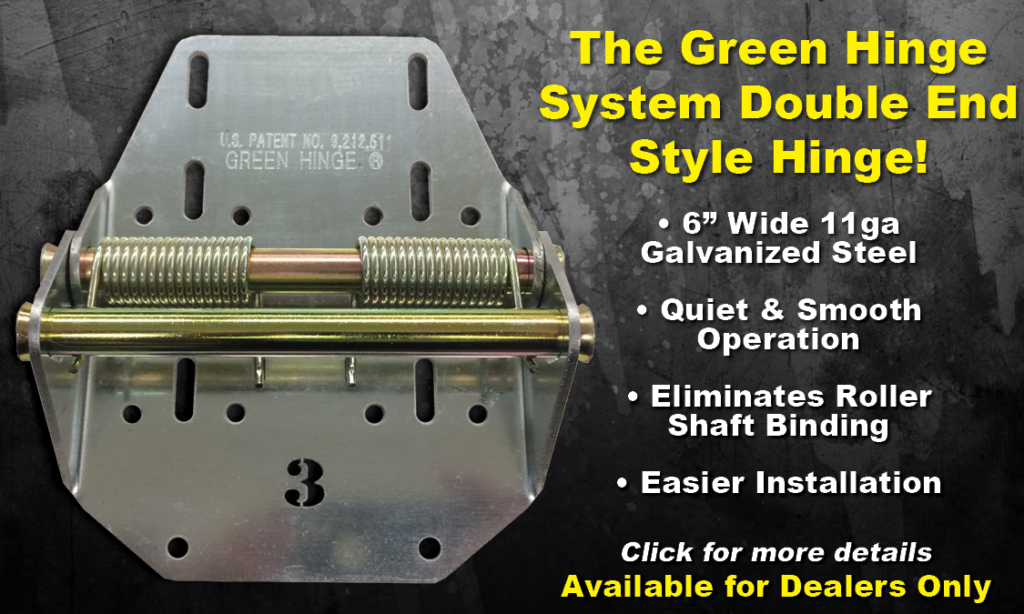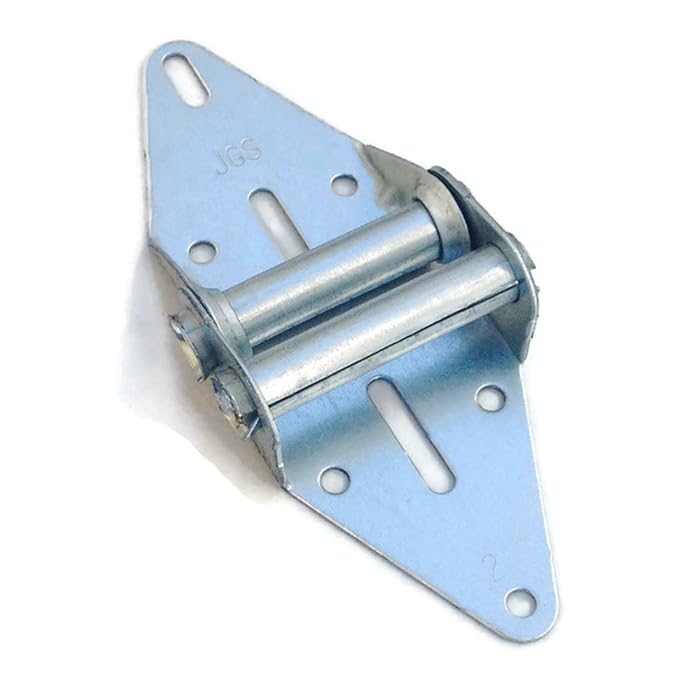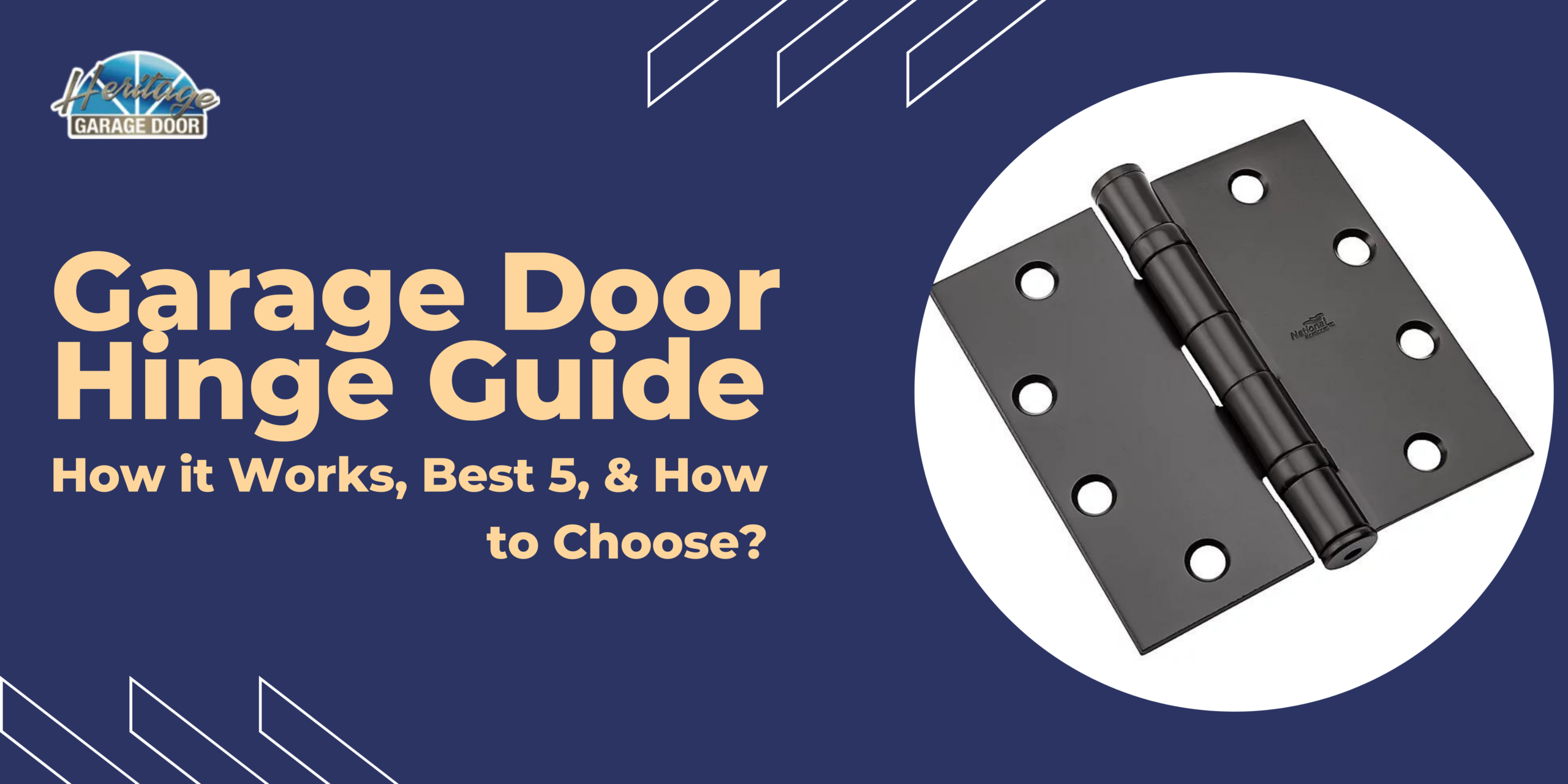
Garage Door Hinge Guide: How It Works & Top 5 Picks
When you look at your garage door, it’s easy to overlook the small but mighty garage door hinges. These little metal wonders, usually made of tough stuff like galvanized steel, do more than just hold your door together. They are the reason why your door closes and opens. Each hinge is marked with a number.
Each knows its place in the line-up. This will make sure your door moves smoothly and stays straight. Garage door hinges are key players in keeping your garage door running smoothly. They link the door’s panels together, letting it open and close without a hitch. Not just that, they keep the door straight and balanced, which is super important for safety. Plus, they help the door last longer by preventing extra strain on other parts. Garage door hinges have come a long way.
Back in the day, they were pretty basic, crafted from whatever metal was handy. But as time went on, we started seeing tougher materials like galvanized steel and aluminum. The designs got a facelift too, keeping up with the heavier, fancier doors we use now. It’s all about striking the right balance – making sure these hinges can handle more without giving up on durability or style.
When picking out garage door hinges, it’s key to get the size and type right for your door. You’ll want something sturdy, like steel, to last longer. Make sure they fit well with your door, especially if it’s a heavier or insulated one. And if you can get hinges that resist rust and don’t need much upkeep, that’s a big plus for saving hassle down the line.
For homeowners, knowing a bit about garage door hinges can save a lot of headaches. Choosing the right ones means your door will work smoothly and last longer, keeping repair costs down. Plus, it’s a safety thing – the right hinges keep your door running safely. And understanding which materials last longer can mean fewer replacements in the long run.
How Does A Garage Door Hinge Work?
Let’s dive a bit deeper into how garage door hinges work. These hinges act as pivotal joints between the panels of a sectional garage door. They’re strategically placed at the meeting points of the panels.
When you initiate the opening of the garage door, here’s what happens:
- Pivoting Action: As the door begins to lift, the hinges at the joints between each panel allow for a controlled pivoting action. This is crucial because, without this flexibility, the rigid panels couldn’t navigate the curve from the vertical (closed) path to the horizontal (open) path along the ceiling.
- Guided Movement: The hinges guide the panels through a specific trajectory. Lower hinges (closer to the ground when the door is closed) usually have a smaller degree of movement, while the hinges higher up might have a greater range to facilitate the transition to the door’s horizontal position.
- Weight Distribution: The hinges distribute the door’s weight evenly across the panels. This distribution is important because it prevents any single panel from bearing too much stress, which could lead to warping or damage.
- Seamless Operation: As the door opens or closes, the hinges ensure that each panel remains aligned with its neighbors, maintaining a tight seal and smooth operation. This alignment is key to preventing gaps or misalignments that could compromise the door’s function or security.
- Supporting Rollers: In many garage doors, the hinges also have integrated rollers or are positioned close to them. These rollers run along the garage door tracks, further assisting in the smooth, guided movement of the door as it opens and closes.
Top 5 Best Garage Door Hinge Types
Overall, the hinges’ role is a blend of flexibility and control – they allow the necessary movement while ensuring the garage door operates smoothly, remains aligned, and doesn’t experience undue stress or wear in any one area.
Green Hinge System’s Energy-efficient Hinges

These guys are a game-changer for keeping your garage snug and dust-free. They’ve got this clever spring system that hugs your door tight to the frame, saving you on those heating bills. They’re tough too, made with 12 gauge steel and a powder coat to keep rust at bay.
National Hardware’s Hinges

These are the all-rounders – they’ll fit pretty much any garage door you’ve got. They’re sturdy, thanks to heavy-duty steel, and have a rust-resistant coating, making them a reliable choice without breaking the bank.
JGS’s Heavy-Duty Hinges

These are the tough guys on the block. Built with 12 gauge steel, they’re perfect for residential and lighter commercial doors. They’re a breeze to install and have a galvanized finish to fend off corrosion.
Standard Duty Hinges
Perfect for the smaller, single garage doors or those made of lighter materials like fiberglass. They’re the underdogs in terms of strength but are a solid choice for less demanding jobs.
Household Essentials’ Decorative Hinges
These are for adding a touch of flair to your garage. They’re magnetic, super easy to slap on your steel doors, and weather-resistant, making your garage look sharp without much effort. Each of these hinges has its strengths, whether it’s energy efficiency, ease of installation, durability, or just making your garage look good. It’s all about what works best for your garage’s needs and style.
Choosing The Right Garage Door Hinge
Door Type and Weight
Picking the right garage door hinges isn’t just about grabbing any off-the-shelf. It’s more like finding the perfect fit for your favorite pair of shoes. You’ve got to think about what your door is made of and how heavy it is. Like, a big, solid wood door isn’t going to be happy with flimsy hinges – it needs the strong, heavy-duty kind. But if your door is lighter, like a simple steel one, you can go with something less hefty.
Hinge Size and Numbering
Next, there’s a bit of a numbering game. Hinges are usually tagged with numbers (#1, #2, #3, and so on) that tell you where they should go on the door. Lower numbers hang out at the bottom, and as the numbers go up, so do the hinges on the door. It’s all about getting the right fit for each panel.
Material Quality
The material of the hinge is like choosing a raincoat. You want something that can handle your climate. Steel or galvanized metal are good picks, especially if they have a bit of rust-proofing. It’s like an extra layer of protection against crummy weather.
Compatibility with Existing Hardware
Now, think about the rest of your garage door gear – like the rollers and tracks. Your new hinges should play nice with these parts. If they don’t, it’s like putting the wrong puzzle pieces together – it just won’t work right.
Maintenance and Lifespan
Maintenance is key, too. Some hinges are low maintenance, and happy to work for years without a fuss. Others might need a bit of TLC with regular lubrication to keep them moving smoothly.
Brand Reputation and Reviews
Don’t forget to do a bit of homework on the brands. Read up on what other folks are saying about them. A good reputation usually means you’re a winner.
Budget and Cost-effectiveness
Lastly, balance your wallet with what you need. Cheaper might be tempting, but sometimes splurging a bit on quality can save you more in the long run. Think of it as an investment in your home’s smooth operation and safety.
Conclusion
Picking the right hinges for your garage door is kind of like tailoring a suit – it needs to fit just right. Start by considering your door’s weight and type. Heavier doors will need stronger hinges, something that can take the extra weight without buckling. On the flip side, lighter doors can use more basic hinges.
The numbers on the hinges aren’t just there for show – they tell you where they need to go on the door. This is key for a proper fit and function. Material-wise, think long-term; you want something that can stand up to whatever weather comes your way, be it rain, snow, or just humidity.
Now, it’s not just about the hinges themselves. They’ve got to work well with the rest of your garage door setup – like those rollers and tracks. Some hinges are pretty low-maintenance, a real ‘set and forget’ deal, while others might need a bit more attention to keep them in tip-top shape. By balancing these factors, you’ll be set up for a smooth-running garage door for years to come



